-
 Bitcoin
Bitcoin $117400
1.93% -
 Ethereum
Ethereum $3747
3.63% -
 XRP
XRP $3.157
3.09% -
 Tether USDt
Tether USDt $1.000
0.02% -
 BNB
BNB $783.3
3.19% -
 Solana
Solana $186.6
5.64% -
 USDC
USDC $0.9999
0.01% -
 Dogecoin
Dogecoin $0.2375
5.42% -
 TRON
TRON $0.3185
1.32% -
 Cardano
Cardano $0.8191
3.28% -
 Hyperliquid
Hyperliquid $44.43
5.76% -
 Sui
Sui $3.995
9.84% -
 Stellar
Stellar $0.4396
6.27% -
 Chainlink
Chainlink $18.26
4.83% -
 Hedera
Hedera $0.2646
11.88% -
 Bitcoin Cash
Bitcoin Cash $553.5
5.55% -
 Avalanche
Avalanche $24.13
4.73% -
 Litecoin
Litecoin $113.3
1.77% -
 UNUS SED LEO
UNUS SED LEO $8.975
0.11% -
 Shiba Inu
Shiba Inu $0.00001405
5.69% -
 Toncoin
Toncoin $3.319
7.46% -
 Ethena USDe
Ethena USDe $1.001
0.02% -
 Uniswap
Uniswap $10.44
4.98% -
 Polkadot
Polkadot $4.098
4.31% -
 Monero
Monero $328.6
1.87% -
 Dai
Dai $1.000
0.01% -
 Bitget Token
Bitget Token $4.561
2.76% -
 Pepe
Pepe $0.00001261
5.29% -
 Aave
Aave $296.8
4.02% -
 Cronos
Cronos $0.1335
3.28%
ブロックチェーンのDAG構造は何ですか?ブロックチェーンとどう違うのですか?
DAGSは、IOTAやNanoなどの暗号通貨でスケーラブルで高速なトランザクションを提供しますが、従来のブロックチェーンと比較してセキュリティと採用の課題に直面しています。
2025/04/27 20:56
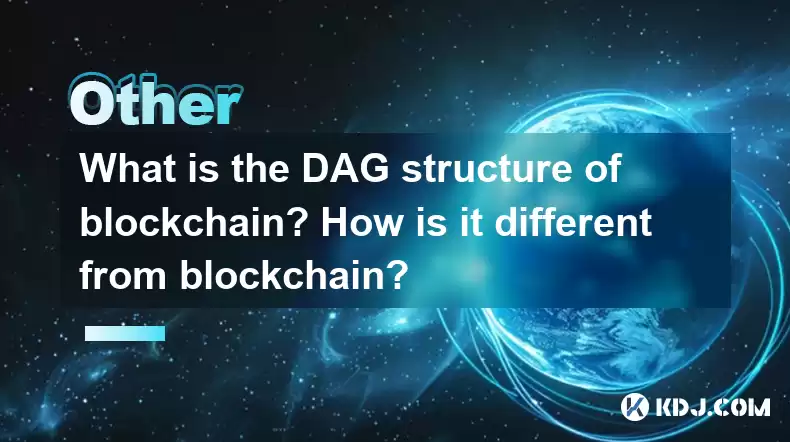
指示された非環式グラフ(DAG)構造は、暗号通貨エコシステム内の従来のブロックチェーン技術の魅力的な代替品を表しています。 DAGは、スケーラビリティとトランザクション速度を高めるためにいくつかの暗号通貨で使用されるデータ構造の一種です。ブロックの線形チェーンに依存する従来のブロックチェーンとは異なり、 DAGはより複雑で相互接続されたトランザクションネットワークを採用しています。この記事では、DAG構造の詳細、ブロックチェーンとの違い、および暗号通貨操作への影響について説明します。
DAG構造を理解する
直接性環境グラフ(DAG)は、エッジに方向があり、サイクルがないグラフデータ構造です。暗号通貨のコンテキストでは、グラフ内の各ノードはトランザクションを表し、指向されたエッジはトランザクション間の値の流れを示します。非環状性は、トランザクションがそれ自体に戻ることができないことを保証し、それがデータの完全性と時系列の順序を維持します。
DAGベースのシステムでは、新しいトランザクションはブロックにグループ化されるのではなく、代わりにグラフに直接追加されます。新しいトランザクションを追加するには、システムは通常、1つ以上の以前のトランザクションを参照または検証するためにトランザクションを必要とします。このプロセスは、新しいトランザクションをグラフに追加するだけでなく、過去のトランザクションの有効性を確認することでネットワークを保護するのにも役立ちます。
DAGとブロックチェーンの重要な違い
DAGと従来のブロックチェーンの主な違いは、構造組織と運用力学にあります。ブロックチェーンはブロックの線形チェーンであり、各ブロックには複数のトランザクションが含まれており、暗号化ハッシュを介して前のブロックにリンクされています。対照的に、 DAGは非線形構造であり、ブロックを必要とせずに複数のトランザクションを互いに直接リンクできるようにします。
スケーラビリティは別の大きな違いです。従来のブロックチェーンは、各ブロックを連続的に処理する必要がある線形性のために、スケーラビリティの問題に直面することがよくあります。一方、 DAGはトランザクションを並行して処理でき、潜在的にトランザクションのスループットが高く、確認時間が高くなる可能性があります。
セキュリティメカニズムも異なります。ブロックチェーンでは、コンセンサスは通常、仕事の証明(POW)や杭の証明(POS)などのメカニズムを通じて達成されます。 DAGは、多くの場合、トランザクションを参照することにより、トランザクションの有効性に投票するなど、さまざまなコンセンサス方法を使用します。
DAGベースの暗号通貨の例
いくつかの暗号通貨がDAG構造を採用して、従来のブロックチェーンの制限を改善しています。 IOTAはThe Tangleと呼ばれるDAGを使用し、新しいトランザクションごとに2つの以前のトランザクションを検証する必要があります。このアプローチは、スケーラビリティを向上させ、鉱夫の必要性を減らすことを目的としています。
Nanoは別の例であり、各アカウントに独自のブロックチェーンがあるDAG構造を利用していますが、これらは相互接続されてDAGを形成します。これにより、各ユーザーは独自のトランザクションを検証する責任があるため、インスタントトランザクションと料金がかかりません。
Byteballは、トランザクションが指向性の高い環境的にリンクされるDAGを採用し、トランザクションの有効性に定期的に投票する「証人」と呼ばれるシステムを通じてコンセンサスに達します。
ブロックチェーン上のDAGの利点
DAGは、従来のブロックチェーンよりもいくつかの利点を提供します。 Scalabilityは、並列処理機能により、 DAGは1秒あたりのトランザクションの量を処理できるため、最も重要な利点の1つです。これにより、IoTデバイスやマイクロトランザクションなどの高トランザクションスループットを必要とするアプリケーションに特に魅力的になります。
もう1つの利点は、取引手数料の削減です。 DAGは従来の意味で鉱山労働者や有効な人を必要としないことが多いため、処理トランザクションに関連するコストは低くなる可能性があります。これにより、 DAGベースの暗号通貨が日常の取引により魅力的になります。
DAGは、トランザクションの確認時間をより高速に提供します。トランザクションは同時に処理できるため、ユーザーは、トランザクションが次のブロックを採掘するのを待つ必要がある従来のブロックチェーンと比較して、トランザクションの迅速な確認を経験する場合があります。
課題と考慮事項
彼らの利点にもかかわらず、 DAGは特定の課題に直面しています。従来のコンセンサスメカニズムの欠如は、ダブル支出などの特定の種類の攻撃に対してDAGをより脆弱にする可能性があるため、セキュリティが主な関心事です。開発者は、これらのリスクを軽減するために、堅牢なセキュリティ対策を実装する必要があります。
複雑さは別の考慮事項です。 DAGの非線形性は、ブロックチェーンの単純な構造と比較して、それらを理解し、実装するのをより困難にすることができます。この複雑さは、開発者とユーザーの両方に課題をもたらす可能性があります。
採用もハードルです。 DAGはスケーラビリティと速度に対する有望なソリューションを提供しますが、従来のブロックチェーンよりも確立されていません。暗号通貨コミュニティ内で広範囲にわたる採用と信頼を獲得することは、遅いプロセスになる可能性があります。
暗号通貨におけるDAGの実用的なアプリケーション
DAGは、さまざまな暗号通貨プロジェクトで実用的なアプリケーションを発見しました。たとえば、 IOTAは、IoTデバイス間の安全なデータ転送と支払いを容易にするように設計されています。そのもつれ構造により、感触のトランザクションが可能になり、IoTエコシステムで一般的な微小移動に適しています。
Nanoは、 DAG構造を活用して、無給の取引を即座に可能にします。これにより、速度とコストが重要な要素であるピアツーピアの支払いにとって魅力的なオプションになります。
ByteballはDAGを使用して、価値を保存および転送できる分散データベースを作成します。これには、スマートコントラクトやデジタル資産管理などの分野にアプリケーションがあり、非線形方法でトランザクションをリンクする機能が有益です。
よくある質問
Q:DAGとブロックチェーンは、単一の暗号通貨システムで結合できますか?
A:はい、一部のプロジェクトでは、 DAGとブロックチェーンの両方の要素を組み合わせたハイブリッドモデルを模索しています。たとえば、システムは、トランザクション処理にDAGを使用し、コンセンサスを達成し、元帳を維持するためのブロックチェーンを使用する場合があります。このアプローチは、両方の構造の強度を活用することを目的としています。
Q:DAGのセキュリティは、ブロックチェーンのセキュリティと比較してどうですか?
A: DAGのセキュリティは、ブロックチェーンのセキュリティとは大きく異なる場合があります。ブロックチェーンはしばしばPOWやPOSなどのリソース集約型コンセンサスメカニズムに依存していますが、 DAGSは参照によるトランザクション検証などの代替方法を使用する場合があります。これにより、 DAGは特定の種類の攻撃に対する脆弱性を低下させる可能性がありますが、2倍の支出など、他の攻撃に対してより影響を受けやすくなります。 DAGベースのシステムによって実装された特定のセキュリティ対策は、全体的なセキュリティを決定する上で重要です。
Q:DAGベースの暗号通貨に固有の規制上の課題はありますか?
A: DAGベースの暗号通貨の規制上の課題は、アンチマネーロンダリング(AML)やカスタマー(KYC)コンプライアンスに関連する問題など、従来のブロックチェーンが直面しているものと類似している可能性があります。ただし、 DAGのユニークな構造と運用力学には、特にトランザクションの検証とコンセンサスメカニズムに関する調整された規制アプローチが必要になる場合があります。
Q:開発者は、どのようにしてDAGベースの暗号通貨を実装することを開始できますか?
A: DAGベースの暗号通貨の実装に関心のある開発者は、 IOTA 、 NANO 、 BYTEBALLなどの既存のプロジェクトを研究して、 DAG実装へのさまざまなアプローチを理解することから始めなければなりません。また、次の手順を考慮する必要があります。
- RustやC ++などのブロックチェーンやDAG開発に適したプログラミング言語を選択します。
- DAG内のトランザクションをリンクするためのトランザクション構造とルールを設計します。
- 参照によるトランザクション検証など、プロジェクトの目標に適合するコンセンサスメカニズムを実装します。
- システムを徹底的にテストして、目的のトランザクションボリュームを処理し、セキュリティを維持できるようにします。
- Cryptocurrencyコミュニティと関わり、フィードバックを収集し、実際のユースケースに基づいてシステムを改善します。
免責事項:info@kdj.com
提供される情報は取引に関するアドバイスではありません。 kdj.com は、この記事で提供される情報に基づいて行われた投資に対して一切の責任を負いません。暗号通貨は変動性が高いため、十分な調査を行った上で慎重に投資することを強くお勧めします。
このウェブサイトで使用されているコンテンツが著作権を侵害していると思われる場合は、直ちに当社 (info@kdj.com) までご連絡ください。速やかに削除させていただきます。
- ウォールストリートのビットコインボナンザ:ETFファイリングシグナルCryptoのカミングアウトパーティー
- 2025-07-26 15:10:12
- ビットコイン、シンシア・ラミス、フリーダム・マネー:ニューヨークの視点
- 2025-07-26 15:10:12
- 英国の技術、ビットコイン、および投資:最新のトレンドの解読
- 2025-07-26 15:30:11
- 英国の暗号規制:Bitcoinアクセスは、小売投資家向けに開かれますか?
- 2025-07-26 15:30:11
- ChatGpt、Binance Coin、価格予測:2025年のBNBの強気な見通し?
- 2025-07-26 15:35:12
- シティグループのビットコイン予測:2025年までに$ 135K - そうですか?
- 2025-07-26 15:35:12
関連知識
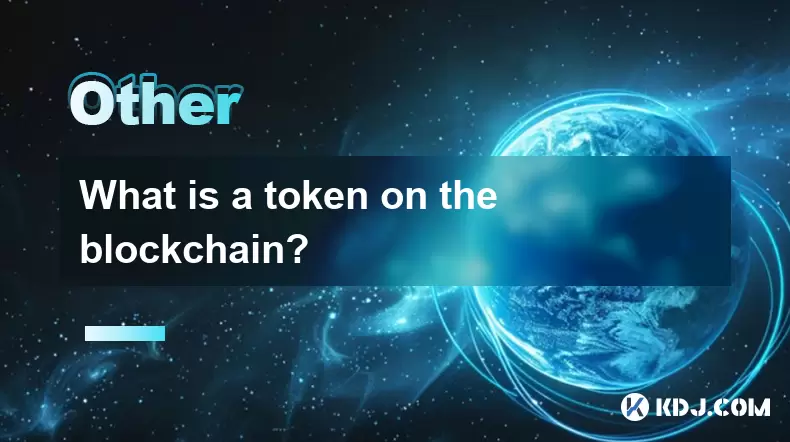
ブロックチェーンのトークンとは何ですか?
2025-07-21 07:00:37
トークンの概念を理解するブロックチェーンテクノロジーの領域では、トークンはブロックチェーンネットワークに存在する資産またはユーティリティのデジタル表現です。独自のブロックチェーンに自生したBitcoinやEthereumなどの暗号通貨とは異なり、トークンは既存のブロックチェーンプラットフォームの上に...
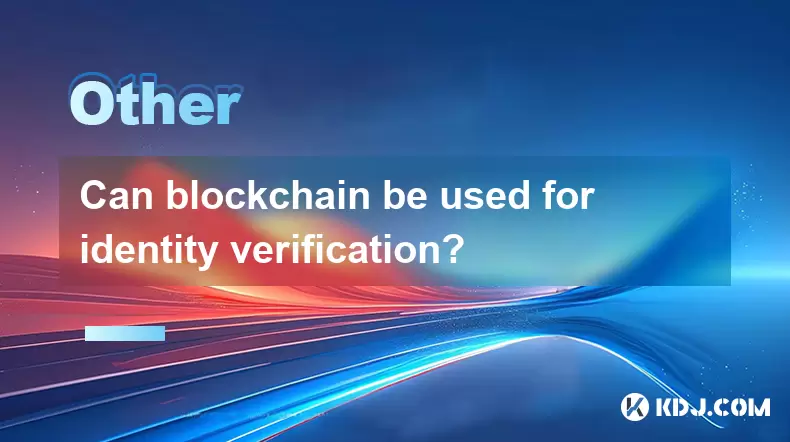
アイデンティティの検証には、ブロックチェーンを使用できますか?
2025-07-18 14:14:50
デジタル時代におけるアイデンティティの検証を理解する現代のデジタル景観では、アイデンティティの検証は、オンラインインタラクションのセキュリティと信頼を確保するための重要な要素となっています。従来の方法は、多くの場合、データ侵害や個人情報の盗難に対して脆弱な集中システムに依存しています。ブロックチェー...
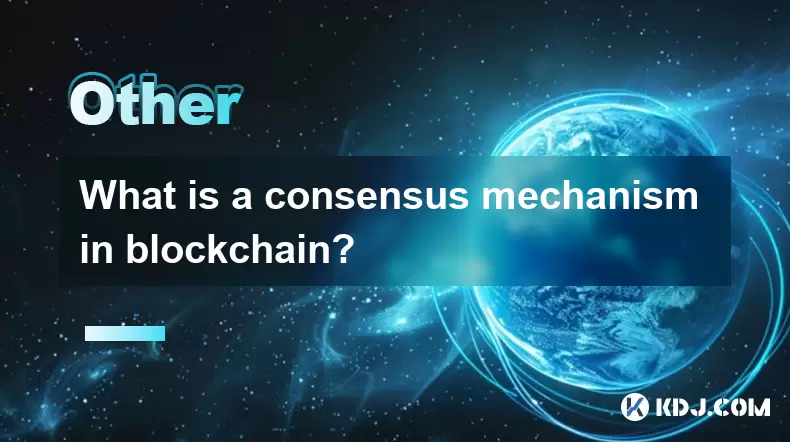
ブロックチェーンのコンセンサスメカニズムとは何ですか?
2025-07-21 03:01:19
コンセンサスメカニズムの基本を理解するコンセンサスメカニズムは、ブロックチェーンネットワークの重要なコンポーネントです。これは、ノード(ネットワークに参加するコンピューター)がトランザクションの有効性と元帳の現在の状態に一致するプロセスを指します。中央当局が運用を監督することがなければ、ブロックチェ...
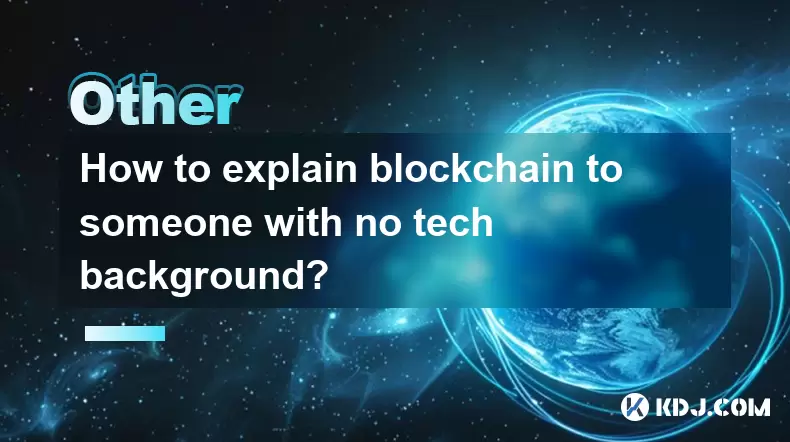
技術のバックグラウンドのない人にブロックチェーンを説明する方法は?
2025-07-18 23:08:13
ブロックチェーンの基本を理解する技術のバックグラウンドのない人にブロックチェーンを説明するには、簡単な類推から始めて、技術用語を避けることが不可欠です。ブロックチェーンは、トランザクションを記録する共有デジタルノートブックと考えてください。このノートブックは、単一の人や組織が所有していません。代わり...

誰がブロックチェーンテクノロジーを発明しましたか?
2025-07-23 01:28:21
ブロックチェーンテクノロジーの起源ブロックチェーンテクノロジーは、単一の発明者または機関から出現しませんでした。代わりに、数十年にわたって一連の学術論文と暗号化の進歩を通じて進化しました。分散元帳、暗号化ハッシュ、ピアツーピアネットワークなど、ブロックチェーンを支えるコア概念は、「ブロックチェーン」...
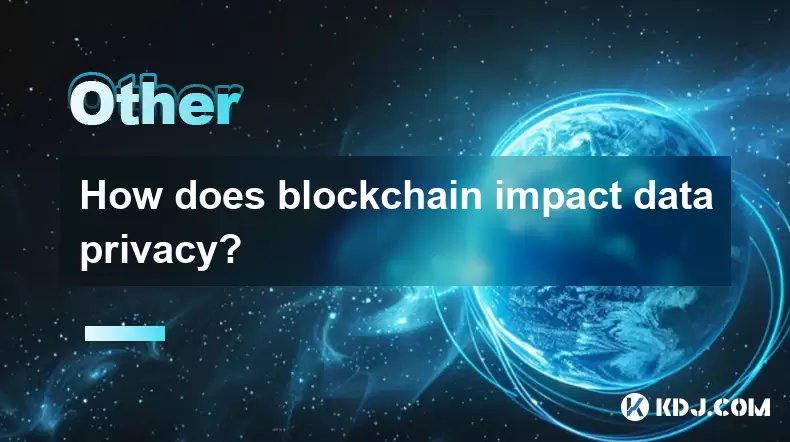
ブロックチェーンはデータプライバシーにどのように影響しますか?
2025-07-21 14:21:55
データプライバシーにおけるブロックチェーンの役割を理解するBitcoinのような暗号通貨の基礎となるインフラストラクチャとして元々開発されたブロックチェーンテクノロジーは、データを保護および管理するための強力なツールに進化しました。その分散された性質は、データの保存、共有、アクセスの方法を根本的に変...

ブロックチェーンのトークンとは何ですか?
2025-07-21 07:00:37
トークンの概念を理解するブロックチェーンテクノロジーの領域では、トークンはブロックチェーンネットワークに存在する資産またはユーティリティのデジタル表現です。独自のブロックチェーンに自生したBitcoinやEthereumなどの暗号通貨とは異なり、トークンは既存のブロックチェーンプラットフォームの上に...

アイデンティティの検証には、ブロックチェーンを使用できますか?
2025-07-18 14:14:50
デジタル時代におけるアイデンティティの検証を理解する現代のデジタル景観では、アイデンティティの検証は、オンラインインタラクションのセキュリティと信頼を確保するための重要な要素となっています。従来の方法は、多くの場合、データ侵害や個人情報の盗難に対して脆弱な集中システムに依存しています。ブロックチェー...

ブロックチェーンのコンセンサスメカニズムとは何ですか?
2025-07-21 03:01:19
コンセンサスメカニズムの基本を理解するコンセンサスメカニズムは、ブロックチェーンネットワークの重要なコンポーネントです。これは、ノード(ネットワークに参加するコンピューター)がトランザクションの有効性と元帳の現在の状態に一致するプロセスを指します。中央当局が運用を監督することがなければ、ブロックチェ...

技術のバックグラウンドのない人にブロックチェーンを説明する方法は?
2025-07-18 23:08:13
ブロックチェーンの基本を理解する技術のバックグラウンドのない人にブロックチェーンを説明するには、簡単な類推から始めて、技術用語を避けることが不可欠です。ブロックチェーンは、トランザクションを記録する共有デジタルノートブックと考えてください。このノートブックは、単一の人や組織が所有していません。代わり...

誰がブロックチェーンテクノロジーを発明しましたか?
2025-07-23 01:28:21
ブロックチェーンテクノロジーの起源ブロックチェーンテクノロジーは、単一の発明者または機関から出現しませんでした。代わりに、数十年にわたって一連の学術論文と暗号化の進歩を通じて進化しました。分散元帳、暗号化ハッシュ、ピアツーピアネットワークなど、ブロックチェーンを支えるコア概念は、「ブロックチェーン」...

ブロックチェーンはデータプライバシーにどのように影響しますか?
2025-07-21 14:21:55
データプライバシーにおけるブロックチェーンの役割を理解するBitcoinのような暗号通貨の基礎となるインフラストラクチャとして元々開発されたブロックチェーンテクノロジーは、データを保護および管理するための強力なツールに進化しました。その分散された性質は、データの保存、共有、アクセスの方法を根本的に変...
すべての記事を見る

























































































